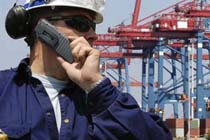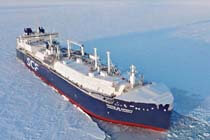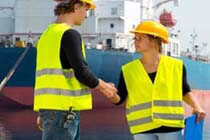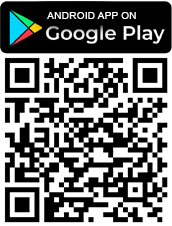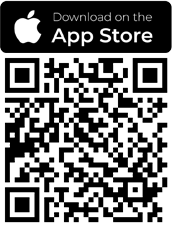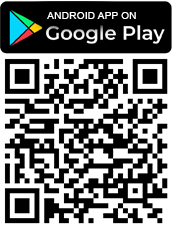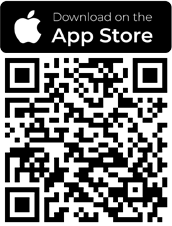The STCW Convention
The key to maintaining a safe shipping environment and keeping our oceans clean lies in all seafarers, across the world, observing high standards of competence and professionalism in the duties they perform onboard. The International Convention on Standards of Training, Certification and Watchkeeping for Seafarers 1978, as amended in 1995 and again in 2010, sets those standards, governs the award of certificates and controls watchkeeping arrangements. Those provisions not only apply to seafarers, but also to ship-owners, training establishments and national maritime administrations.
The STCW convention was adopted by the International Maritime Organization (IMO) in 1978 and came into force in 1984. During the late 1980s, it was clear that STCW-78 was not raising professional standards worldwide, and so IMO members set on to amend it. This was done in the early 1990s, and the amended convention was then called STCW-95.
The 2010 Manila amendments was intended to include all agreed changes since 1995, address new technology, inconsistencies, interpretations and outdated provisions. There was an overall commitment to harmonize the amended STCW Convention, where practical, with the provisions of the 2006 ILO Maritime Labor Convention.
Whereas the STCW-78 Convention focused almost entirely on knowledge, the emphasis of STCW-95 was shifted to practical skills and competence underpinned by theoretical knowledge. The 2010 amendments continued to emphasize competence rather than sea service or period of training. The standard set by the convention applies to seafarers of all ranks serving on sea-going merchant ships registered under the flag of a country party to the convention.
The STCW 2010 Convention has already been accepted by all major labor suppliers and shipping registries. This is more than 98 per cent of the world’s merchant fleet.
The STCW Convention is a book that consists of three sections.
- The articles: Outlines all the legal responsibilities of the party
- The annex: Gives technical details on how the legal responsibilities should be met.
- The STCW Code: Elaborates on the technical details contained in the annex. It contains part A and part B.
Part A: Mandatory standards of training, certification and watch-keeping.
Part B: Recommended guidelines (not mandatory) on training, certification and watch-keeping.
Administration: The government of the Party (country) whose flag a ship is entitled to fly. An administration deals with, amongst other things, regulating the training, education and certification of seafarers, in accordance with the requirements of the convention.
Approved: This means that a national maritime administration has approved a training program or seagoing service because it meets the requirements of the amended STCW Convention.
Mariner Skills’ STCW training programs are approved by the USCG. Some of the USCG approved courses include, Basic Polar Code Training, Tank Ship Dangerous Liquids, and Tank Ship Liquefied Gases.
Function: This is a way of classifying shipboard tasks by functions and levels of responsibility. There are seven functional areas, at three different levels of responsibility.
The levels of responsibility are: Management level (applies to senior officers); operational level (applies to junior officers); and support level (applies to ratings forming part of a navigational or engine watch). Typical Deck or Navigation courses categorized as operation-level requirements include Able Seaman Course and Officer In-Charge of Navigation Watch (OICNW) Course. Marine Engineering Courses at the operations-level include Designated Duty Engineer (DDE) course and the QMED Series of Courses including Junior Engineer, Electrician, Refrigeration Engineer, etc.
Party: A country where the STCW Convention has entered into force. A party is under the obligation to implement the standards contained in the convention.
Standard of competence: This term refers to the minimum knowledge, understanding and proficiency that seafarers must demonstrate to gain certification. The tables contained in part A of the STCW Code specify the standards of competence to be achieved by the seafarer. The thinking behind dividing all duties on board into competencies, functions, and levels of responsibility is that certificates should be awarded on the basis of the specific duties the seafarer carries out on-board rather than on ship departmental divisions (deck/engine).
Certificates: The term ‘certificates’ covers all official documents required under STCW. It includes certificates of competence, endorsements, certificates of proficiency, and any documentary evidence showing that a requirement of the convention has been met. Every party to the convention has to ensure that certificates are only issued to those seafarers who meet STCW standards. For example, certificate of competency for Navigation Able Seaman Course and Officer In-Charge of Navigation Watch (OICNW) Course, and COC for Marine Engineering include Designated Duty Engineer (DDE) course and the QMED Series of Courses including Junior Engineer, Electrician, Refrigeration Engineer, etc.
Certificate of competence: This document is issued to masters, officers, radio operators and ratings forming part of a watch who meet the standards of competence relevant to their particular functions and level of responsibility on-board.
Mariner Skills’ portfolio of USCG approved competency courses include, Able Seaman (AB) and Designated Duty Engineer courses. Both courses are offered as online self-study programs and allows candidates to learn while they work or while they are at home, without having the need to take time off to attend an on-campus program. Mariner Skills’ and Learn America, our USCG approved course development partner, are working to get USCG approvals for the Officer In-Charge of Navigation Watch (OICNW) and a number of management level Navigation Courses and Marine Engineering Courses.
Endorsement: A document issued to masters and officers, either as part of the certificate or as a separate document. This attests (endorses) that the national certificate has been issued in accordance with all STCW requirements. It is required that all endorsements are only issued by the administration after fully verifying the authenticity of any certificates and documentary evidence, and the candidate has fulfilled all requirements and has the standard of competence for the capacity identified in the endorsement.
Endorsement of recognition: This endorsement certificate is issued by an administration as an official recognition of the validity of a certificate issued by another administration. This procedure is necessary as many merchant fleets are manned by seafarers certificated by other administrations. In other words, if you hold a certificate from country ‘x’, but you are serving on a ship registered in country ‘y’, then you need to apply to the maritime administration of country ‘y’ for a certificate authorizing you to serve on ships registered under its flag. Under the 2010 STCW Convention regulation I/2 all seafarers serving on foreign ships must obtain an endorsement.
Masters, chief mates, chief engineers or second engineers applying for an endorsement of recognition are also required to demonstrate knowledge of the maritime legislation of the flag state issuing the endorsement.
Certificates of proficiency: These are documents issued to the seafarer to certify that he or she has met the required standard of competence in a specific duty. These certificates include certificates for personnel serving on certain types of ship (tankers, and passenger ships) and for those assigned with safety, security and pollution prevention duties. It certifies that the holder meets STCW standards of competence in specific functions related to safety, care of persons, or cargo.
Basic safety training for officers: Officers serving on any type of ship who are designated with safety and pollution prevention responsibilities in the operation of the ship need basic safety training. Such training must cover personal survival techniques, basic fire prevention and firefighting, elementary first aid, and personal and social responsibilities. This requirement applies to practically all officers serving on merchant ships. Cadets assigned with these duties also need to complete basic safety training before going to sea. Basic safety training should be documented as having taken place within five years of the officers being assigned to safety and pollution prevention duties.
Simulator training under STCW: The only mandatory simulator training under STCW has been that relating to the use of radar and ARPA. STCW 2010 also makes use of simulators for training in electronic chart display and information systems (ECDIS) a mandatory requirement during training. In these specific cases, simulators are the only accepted methods of demonstrating competence. In all other instances, approved simulator training and assessment is not mandatory, being just one of the methods accepted by the convention for training and demonstrating competence. (The use of other methods such as in-service experience or training ship experience are equally acceptable.) This category of optional simulator training and assessment covers navigation and ship handling, cargo handling, GMDSS communication, propulsion and auxiliary machinery.
Simulators need to comply with prescribed standards. This does not imply that all simulators need to be highly expensive and complex electronic artefacts. Although certain simulators, such as radar or ARPA, do fall under this category, other tasks can be taught and assessed using more basic simulators. Instructors and assessors engaged in simulator-based training need to be properly qualified in the use of such equipment.
English language requirements: Under the STCW Convention, all officers in charge of a watch (navigational or engineering) must have a good command of spoken and written English. Senior officers with functions at a managerial level must also speak and write English, since this is a requirement at the previous level of responsibility. Ratings forming part of a navigational watch are required to be able to comply with helm orders issued in English. Crew members assisting passengers during emergency situations should be able to communicate safety-related issues in English or in the language spoken by the passengers and other personnel on board. n these days of multi-national and multi-lingual crews, the importance of sharing a common language cannot be underestimated.
The use of distance learning and e-learning: Administrations may now allow the training of seafarers by distance learning and e-learning in accordance with the standards in section A-I/6 and the convention now contains substantial guidance.







